Impressions of Kasachstan#
A short visit in 2017 by Hermann Maurer
Introduction#
Kazakhstan ( officially the Republic of Kazakhstan) is the world's largest landlocked country, and the ninth largest in the world, with an area of about 2,700.000 square kilometres. Kazakhstan is the dominant nation of Central Asia economically, generating 60% of the region's GDP, primarily through its oil/gas industry. It also has vast mineral resources. With a populaton of about 16 million it has a population density of less than 6 per sqare km.
Large parts of the country are "Siberian steppes" (dry, hot in summer, very cold in winter) but there are also beautiful mountainous regions in the South and East. The original capital Almaty (about 2 million people, close to the Kirgisistan border, a green and nice city) has been replaced as capital by Astana (about one million people) further North in a harsh climate , replacing an old (Russian) city with futuristic architecture.
Astana, Almaty
This was the place for EXPO 2017. This EXPO was, depending on how you count, the 35 th or 47 th world exhibition. The motto of it was "Future Energy: Action for Global Sustainability", June 10 to September 10, 2017.
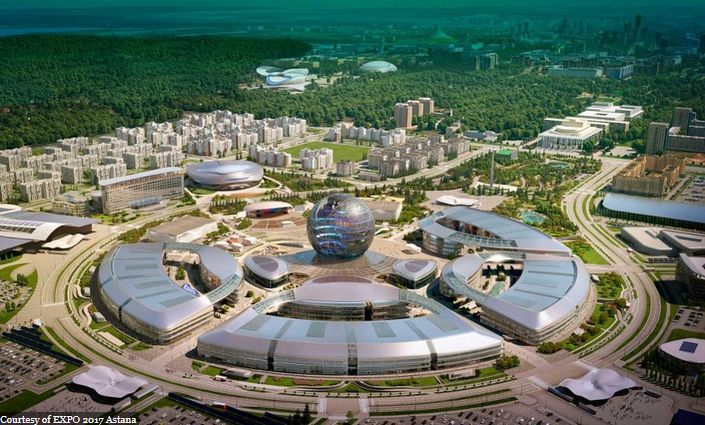
Official photo of Expo site. It shows the sphere and the surrounding exhibition areas, with 118 pavillons of countries partiticipating. Some, like Africa, all together in one big pavillon. In addition, there were also a number of pavillons sponsored by international organisations. Photo: EXPO 2017
The first EXPO was held in London 1851, the next EXPO will be 2020 in Dubai with highlights like a 1,2 km long down-hill ski run, an appartment building higher than 700 meters and a water fountain blowing water 420 meters high!
EXPO 2017#
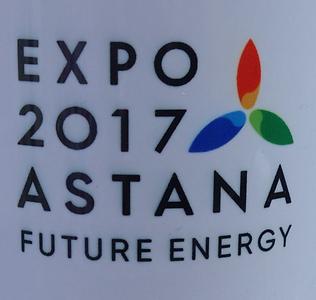
Expo symbols everywhere! Photo: H. Maurer, August 2017
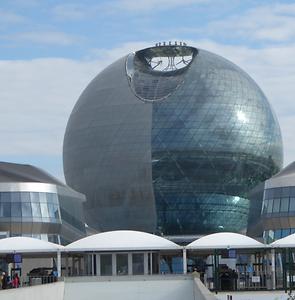
The main highlight was the 100 m high sparkling sphere (Nur Alem) showing all aspects of Kasachstan. Photo: H. Maurer, August 2017
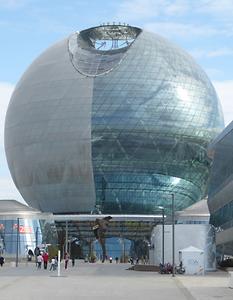
The usual visitor would take an elevator to the top and follow a spiral way down, passing uncountable exhibits. Photo: H. Maurer, August 2017
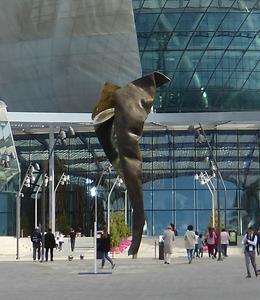
a piece of art was located at each of the large entrance alleys. Photo: H. Maurer, August 2017
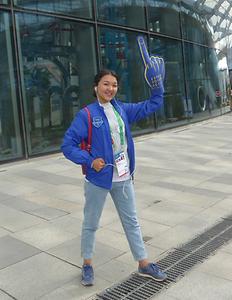
The glove with the big finger was one of the unusual tools of local guides. Photo: H. Maurer, August 2017
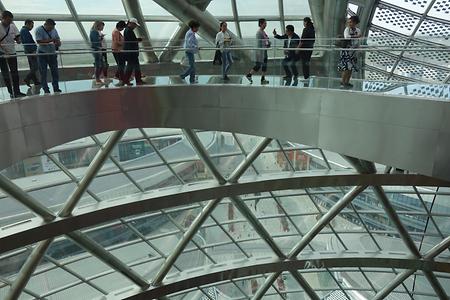
Walking the galleries. Photo: H. Maurer, August 2017
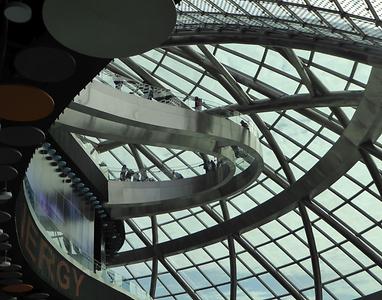
The walk offered incredible views. Many of the main exhibitions are- seen from the galleries- towards the center. Photo: H. Maurer, August 2017
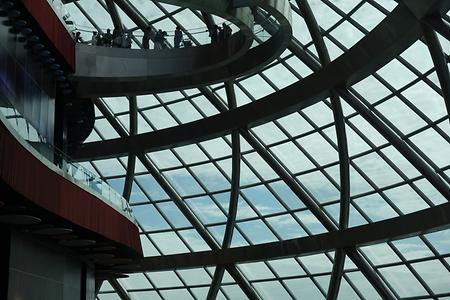
Galleries. Photo: H. Maurer, August 2017
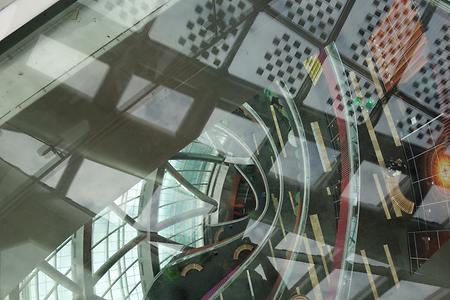
Galleries to get dizzy. Photo: H. Maurer, August 2017
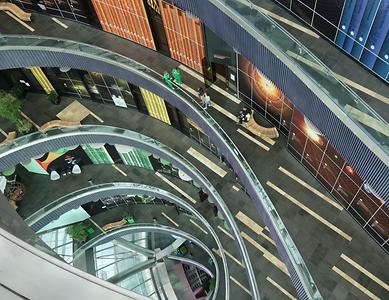
Galleries. It is impressive that all engergy needed for running the sphere is generated by solar panels and wind generators that one would not notice except that the fact is pointed out in a few places and the official brochure. Photo: H. Maurer, August 2017
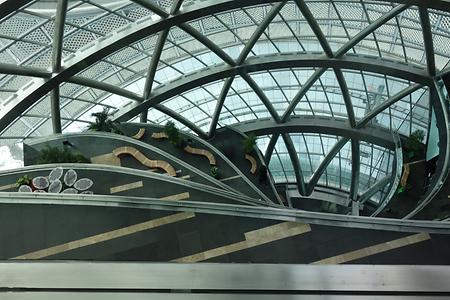
Overall, the sphere lives up to the motto of EXPO by explaining with exhibits various ways to generate renewable energy. It is interesting (see comments further down) that nuclear engergy is not mentioned in any significant way. Photo: H. Maurer, August 2017
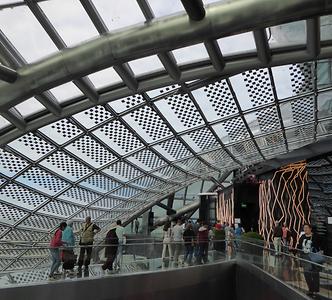
Galleries. Photo: H. Maurer, August 2017
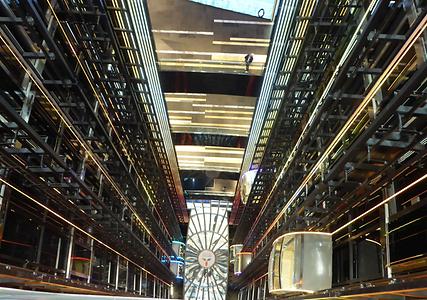
Looking down the elevator shaft. Photo: H. Maurer, August 2017
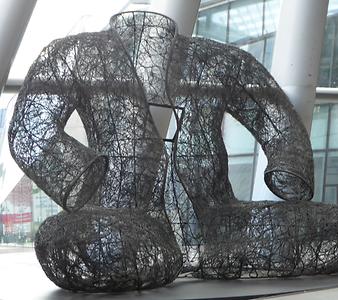
Some exhibits are really pieces of art, and towards the outside of the sphere. Photo: H. Maurer, August 2017
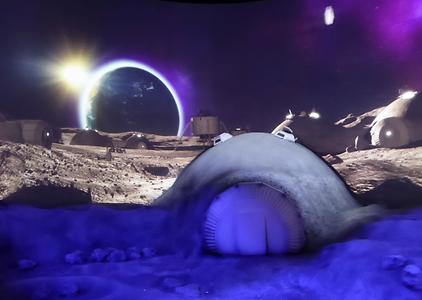
A visit to Mars. Photo: H. Maurer, August 2017
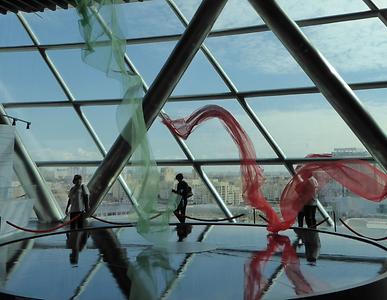
Veils lifted by airdrafts. Photo: H. Maurer, August 2017
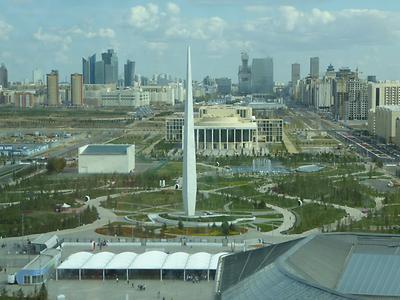
A view to the ouside. Such views are many, but a wire mesh in front of the windows (probably to reduce too much sun in the galleries) makes the sphere not the ideal spot to take pictures of the city. Photo: H. Maurer, August 2017
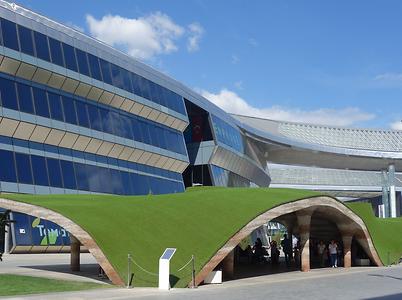
Between the sphere and the exhibition area there are some interesting experiments. Like this one, a concrete structure with (artificial) grass to provide shade. Photo: H. Maurer, August 2017
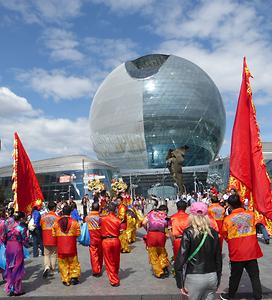
Parades all the time. To lure visitors into some pavillons. Photo: H. Maurer, August 2017
Since the motto was "future energy" I was wondering who would be brave enough to mention nuclear energy. The first price goes to Russia, who (see pictures below) make it abundantly clear that they are continuing to use nuclear reactors for clean energy, medicine, and large ships (well, they did not mention their nuclear submarines). France was not hedging either but proudly announced that a good part of the energy needs of France would come from nuclear rectors (as it does at the very moment). My admiration goes to Japan. It is clear that they are working on an energy mix (everyone claims to do this), but certainly also with safer and better located reactors in the future: "We hope the world can learn from us."
I find it sad that countries like Pakistan (planning to construct over 30 new nuclear plants), Finland (with a decision for at least three more) and others were timid enough not to mention the issue. But Germany is certainly the most negative case: this country has only three ways to go: pollute the air by burning coal (as is done at the moment), forging ahead with resaerch on nuclear energy (e.g. on fusion reactors that would be much safer than fission reactors), or importing energy in large quantities.

Photo: H. Maurer, August 2017

Photo: H. Maurer, August 2017
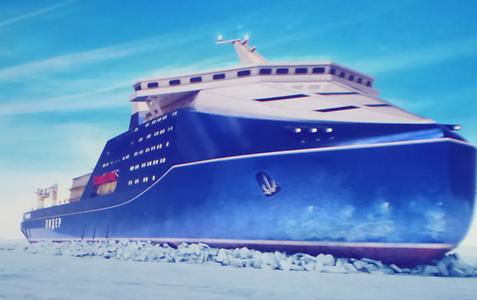
Photo: H. Maurer, August 2017
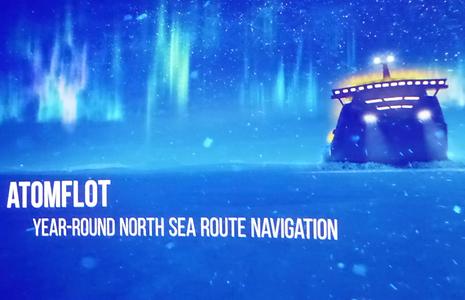
Photo: H. Maurer, August 2017
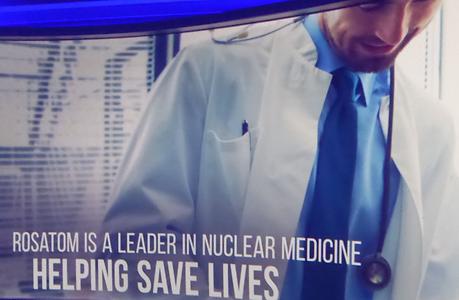
Photo: H. Maurer, August 2017
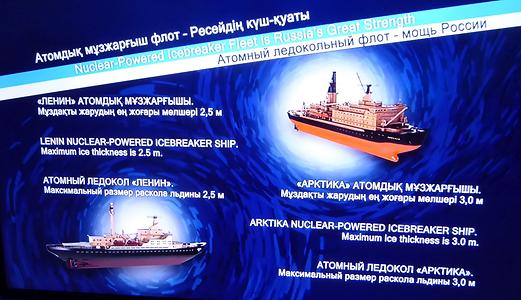
Photo: H. Maurer, August 2017
Astana#
Astana
Astana
is the capital of Kazakhstan. It is located on the Ishim River within the Akmola Region and has about one million inhabitants (second only to Almaty). It was founded in 1830 as a defensive fortification for the Siberian Cossacks. In 1832 the settlement was granted a town status and renamed Akmola. In 1961 the city was renamed Tselinograd (still used as name for the airport area). On 10 December 1997 Akmola replaced Almaty as the capital of Kazakhstan. On 6 May 1998 it was renamed Astana which just translates into "the capital city".
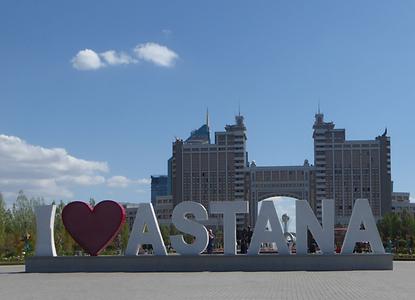
A view from the shopping center with the 97 meter high tower Baiterek at the very back, the most photographed attraction of Astana before EXPO. The following pictures use successivley stronger zoom to show the tower. Photo: H. Maurer, August 2017
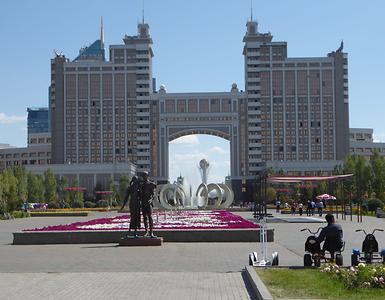
Baiterek. Photo: H. Maurer, August 2017
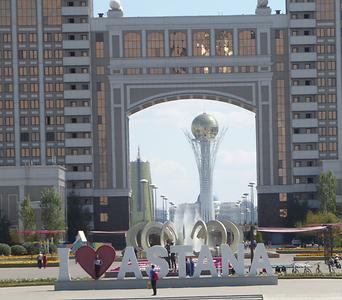
Baiterek. Photo: H. Maurer, August 2017
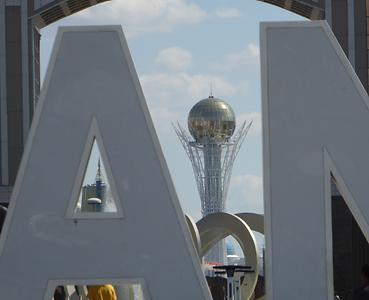
Baiterek framed by the two letters A and N of ASTANA. Photo: H. Maurer, August 2017
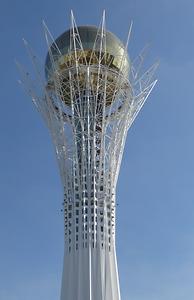
Close up picture of tower. Photo: H. Maurer, August 2017
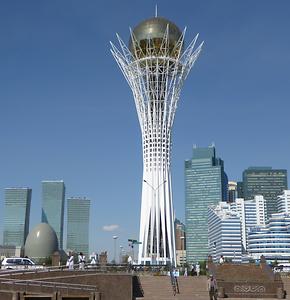
There was a long waiting line (one hour?) to get to the top of the tower by elevator. Photo: H. Maurer, August 2017
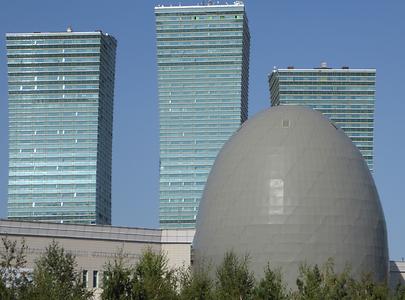
The views from the top are impressive, including crooked looking towers and the "egg". Photo: H. Maurer, August 2017
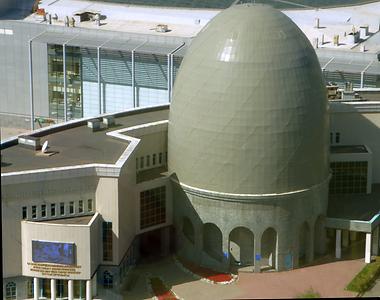
The egg close-up. Photo: H. Maurer, August 2017
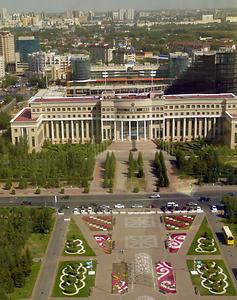
Panoramic views from the top. Photo: H. Maurer, August 2017
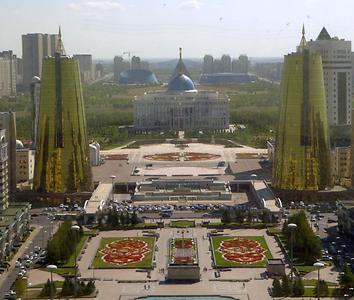
This panoranic view of one of the axis of the city with two "decapitated" golden cones and the presidential palace in the background is spectacular. Photo: H. Maurer, August 2017
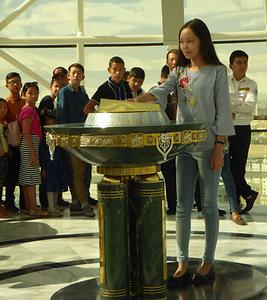
At the very top there is an exhibit with the (gilded) impression of the hand of president Nursultan Nasarbajew. If one places ones hand in the impression (as the girl is doing) and the hand fits, this brings luck. Photo: H. Maurer, August 2017

Back at the bottom of the tower, looking up. Photo: H. Maurer, August 2017
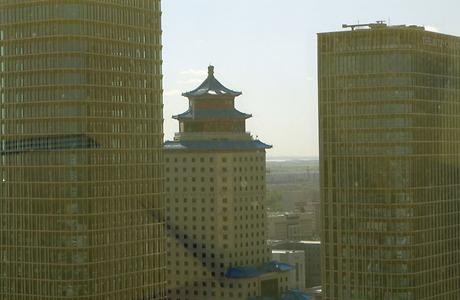
High rises with the chinese house. Photo: H. Maurer, August 2017
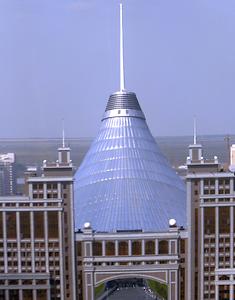
A view of the major shopping center, that has a glass- roofed swimming pool on the top that can be used when it is 40 below zero outside in winter. Photo: H. Maurer, August 2017
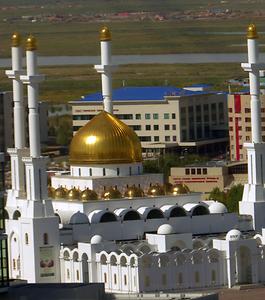
The golden mosque. Photo: H. Maurer, August 2017
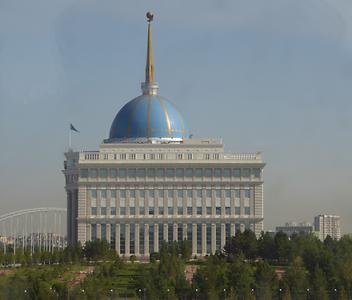
The presidential palace. Reportedly much bigger than the White House in Washington. Photo: H. Maurer, August 2017
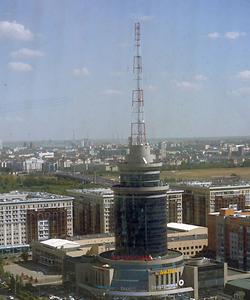
More startling architecture. Photo: H. Maurer, August 2017
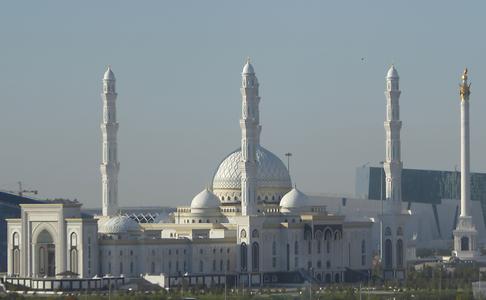
Hazran Sultan Mosque, opened in 2012. Photo: H. Maurer, August 2017
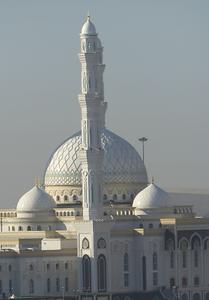
The minarets are 77 meters hihg, the main coupola is 51 meters high. Photo: H. Maurer, August 2017
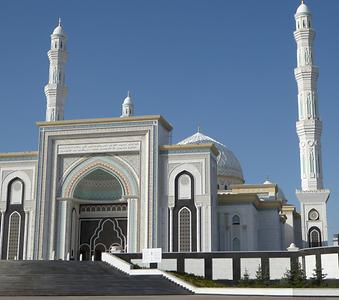
Side view of mosque. Photo: H. Maurer, August 2017
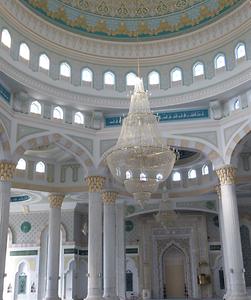
Inside the mosque with incredible chandeliers. Photo: H. Maurer, August 2017
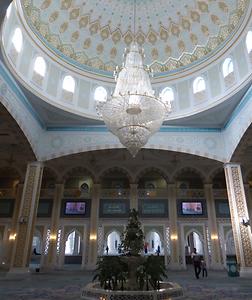
The mosque has room for 10.000 people. Photo: H. Maurer, August 2017
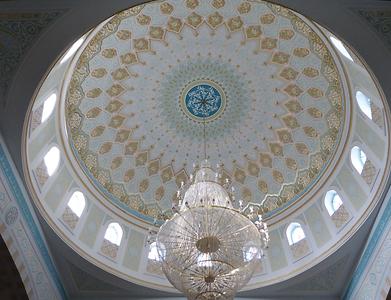
Inside the mosque with incredible chandeliers. Photo: H. Maurer, August 2017
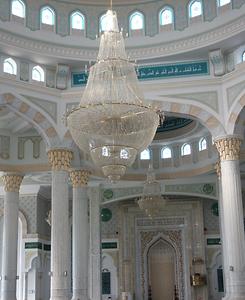
Photo: H. Maurer, August 2017
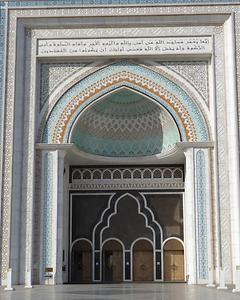
The most holy place. Photo: H. Maurer, August 2017
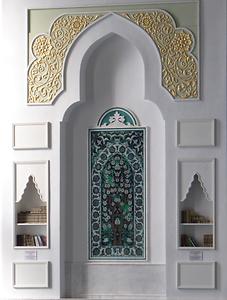
Beautiful decorations. Photo: H. Maurer, August 2017
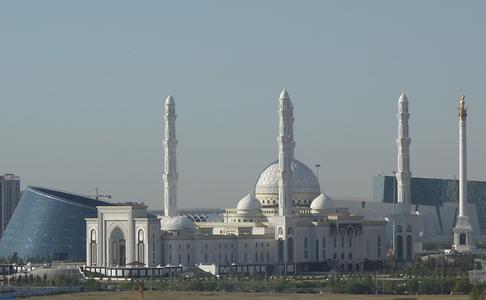
One more outside view, with a bit of the palace of arts on the left. Photo: H. Maurer, August 2017
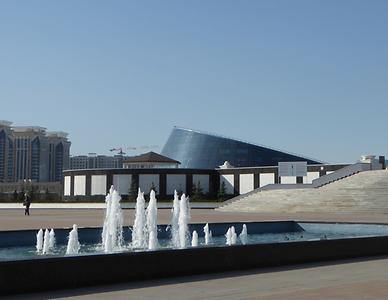
Fountains and part of the palace of arts. Photo: H. Maurer, August 2017
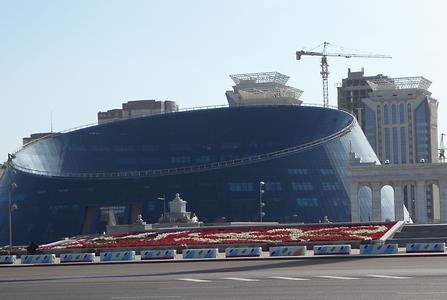
Shabyt - The palace of arts, by locals sometimes called "doggy dish". Photo: H. Maurer, August 2017
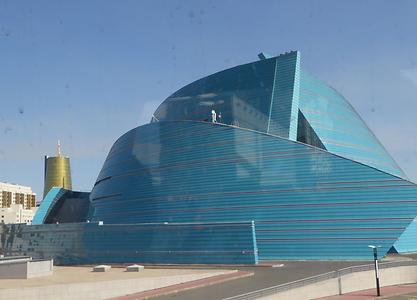
Another architectural marvel: The concert hall. Photo: H. Maurer, August 2017
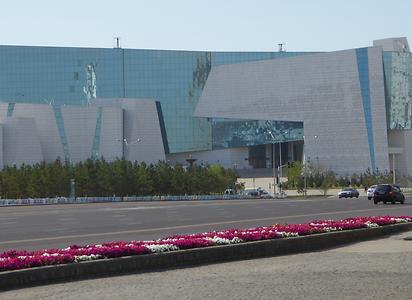
Building Astana was heaven for architects. Photo: H. Maurer, August 2017
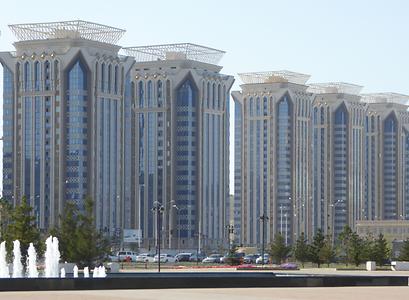
Highrises. Notice the top of the buildings to protect a bit against too much sun. Photo: H. Maurer, August 2017
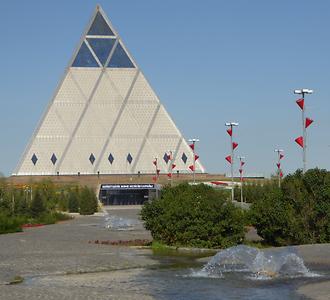
The pyramid of peace. Photo: H. Maurer, August 2017
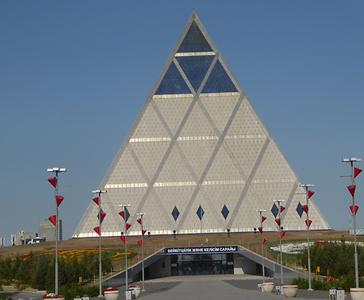
This pyramid was designed by Norman Foster and opened in 1962. It is used once in a while to assemble represenatives of all major world religions for a dialogue. Photo: H. Maurer, August 2017
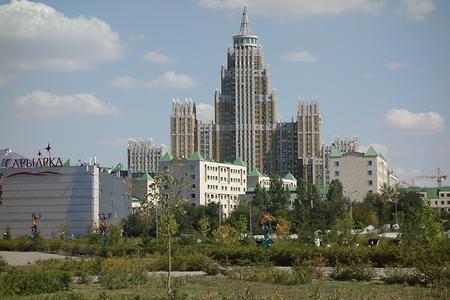
Scyscrapers with strange spikes. Photo: H. Maurer, August 2017
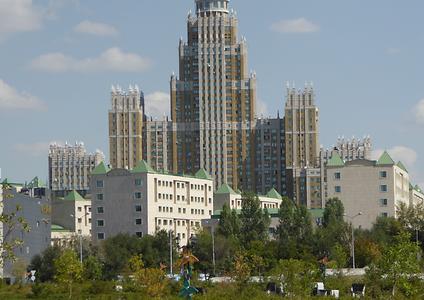
Photo: H. Maurer, August 2017
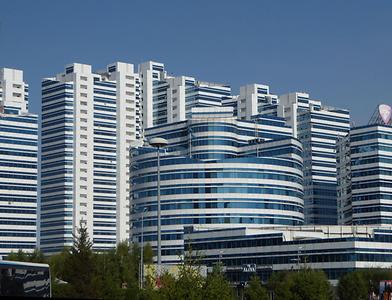
An assembly of round and rectagular buildings. Photo: H. Maurer, August 2017
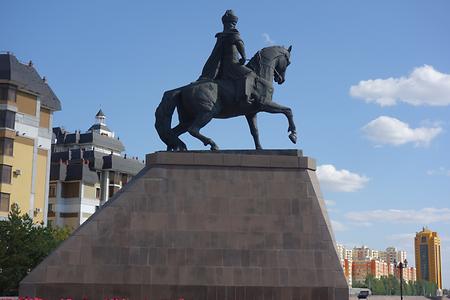
Honoring the past. Photo: H. Maurer, August 2017
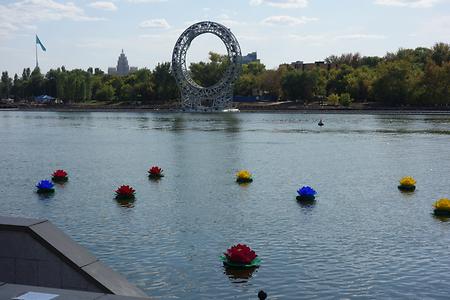
The Ischim River offers a long line of restaurants and other suprises. Photo: H. Maurer, August 2017
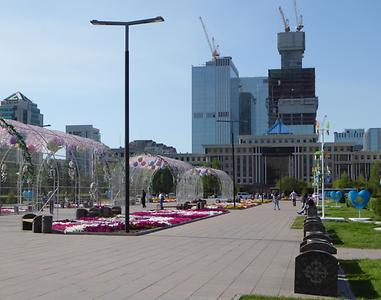
Walkways covered by an arrangement of (plastic) flowers can be seen in a number or places. Photo: H. Maurer, August 2017
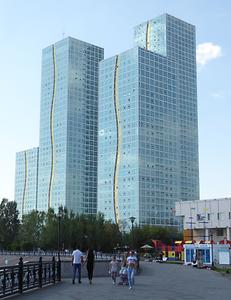
Once more: The "crooked buildings" from an other angle. Photo: H. Maurer, August 2017
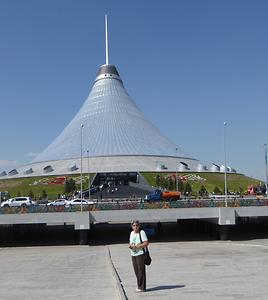
It does not look huge, but it is, a multi-storey shopping mall with Disneyland-like attractions (including a glass covered pool mentioned before) on the top floor. Photo: H. Maurer, August 2017
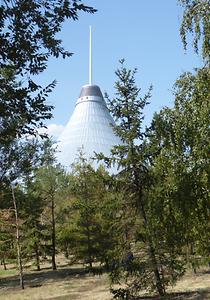
Yes, there are also trees in Astana. Photo: H. Maurer, August 2017
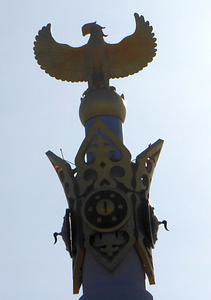
Top of column with typical insignias. Photo: H. Maurer, August 2017
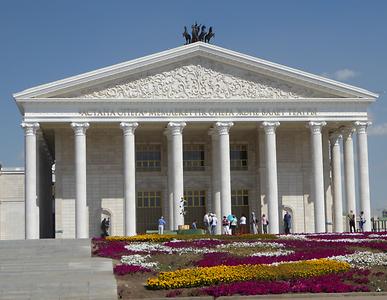
The opera house. Huge, but looks disappointing like some European opera. Photo: H. Maurer, August 2017
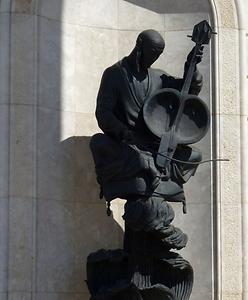
The Kobyz is an ancient Kazakh string instrument. It has two strings made of horsehair. The resonating cavity is usually covered with goat leather. Photo: H. Maurer, August 2017
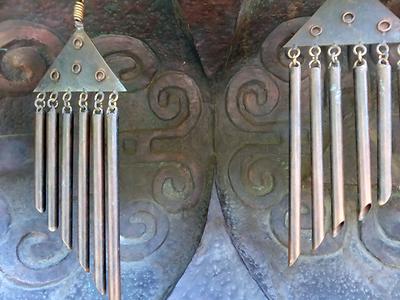
Inside a version of one type of Kobyz. Photo: H. Maurer, August 2017
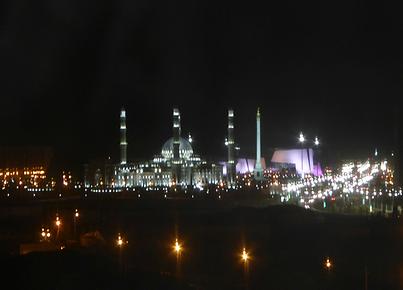
White mosque at night. Photo: H. Maurer, August 2017
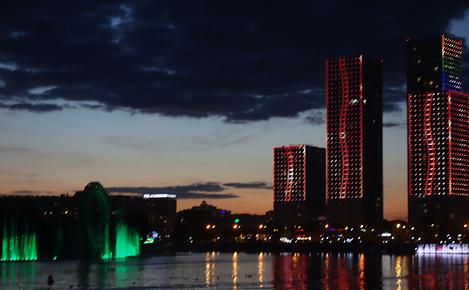
River and "crooked buildings" at night. Photo: H. Maurer, August 2017
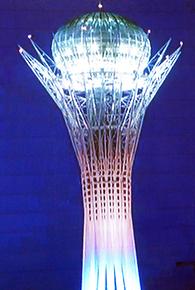
The tower. Photo: H. Maurer, August 2017
From Astana 200 km SE is Karaganda, fourth largest city of Kasachstan.
Astana, Karaganda
, center of coal mining and related industries. Some 40 km East is Karlag, known for a building that is now a museum but was the headquater of archipel Gulag in the area. Hundred thousands of prisoners in the Gulags were forced to work and live under incredible conditions. In Karaganda is the place where cosmonauts from the ISS stayed in the hotel Cosmomonaut, among them the Austrian cosmonaut Viehböck.
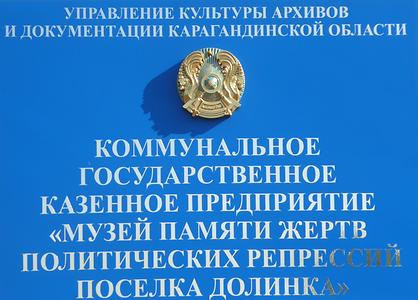
Sign explaining that this was the adminsitration center of the archipel Gulag. Photo: H. Maurer, August 2017
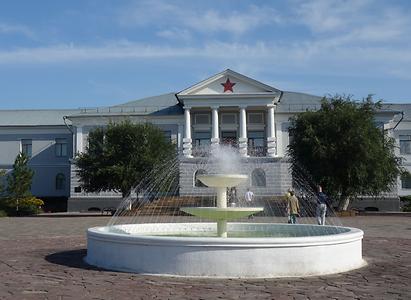
Main Building. Photo: H. Maurer, August 2017
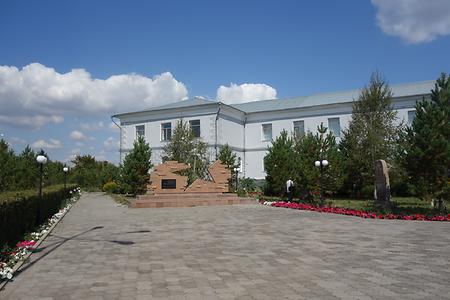
View of main bulidng, sidewise. Photo: H. Maurer, August 2017
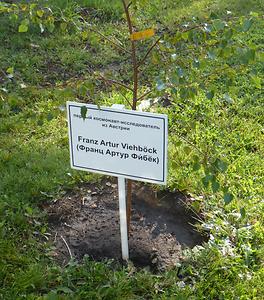
The Austrian astronaut Viehboeck is one who stayed in hotel Comsmonaut, and has (like all others) a sign and a birch tree to commemorate his flight. Photo: H. Maurer, August 2017
Almaty#
Capital city
Almaty
till 1997. Some 2 million inhabitants. It is located close to the Kirgisistan border and close to the mountain range bewtween Southern Kasachstan and Kirgisistan. It is a city with many tress and green areas, yet many persons commute daily into the city from over 50 km, crating much air pollution due to the mountain ranges surrounding the city on three sides.
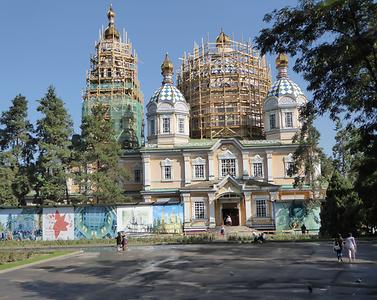
The Ascension Cathedral also known as Zenkov Cathedral, is a Russian Orthodox cathedral located in Panfilov Park in Almaty, Kazakhstan. Completed in 1907, it is one of the tallest wooden buildings in the world. Under restoration in summer 2017- Photo: H. Maurer, August 2017
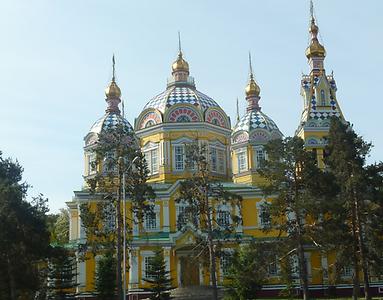
Photo of drawing what the cathedral will look like after restoration. Photo: H. Maurer, August 2017
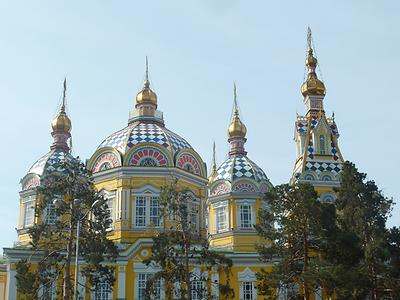
This is what the cathedral looked like in 2012. Photo: H. Maurer, August 2012
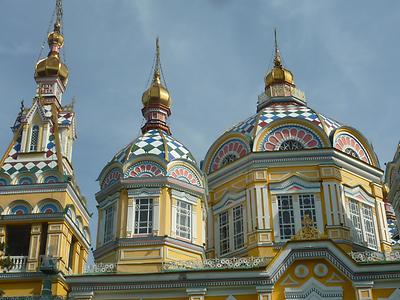
This is what the cathedral looked like in 2012. Photo: H. Maurer, August 2012
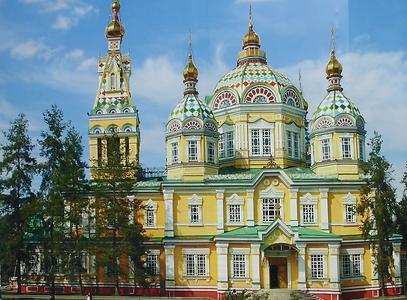
This is what the cathedral looked like in 2012. Photo: H. Maurer, August 2012
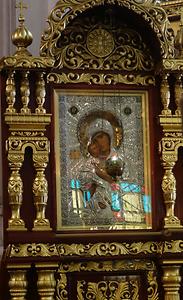
Inside. Photo: U. Maurer, August 2017
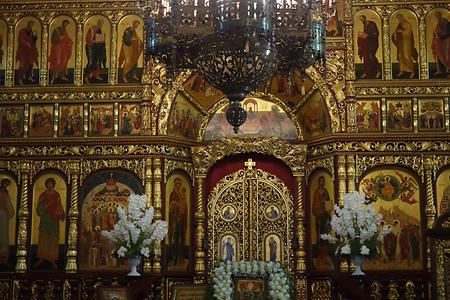
Inside. Photo: U. Maurer, August 2017
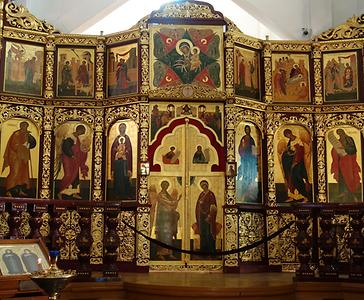
Inside. Photo: U. Maurer, August 2017
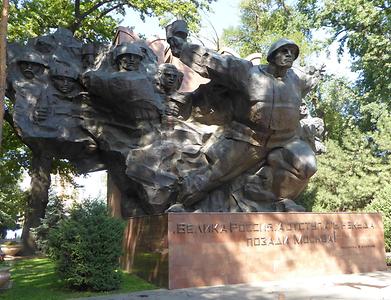
Monument of the 28 Panfilow soldiers who (so some reports go) chose death to defy German tanks rolling into Moscow. Photo: H. Maurer, August 2017
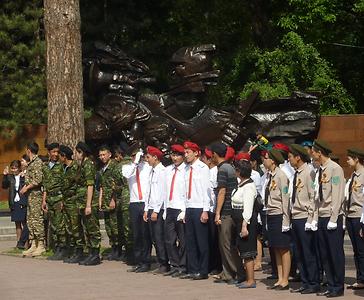
In May each year there is a celeration for this event. Photo: H. Maurer, May 2012

Clebration May 2012. Photo: H. Maurer, May 2012
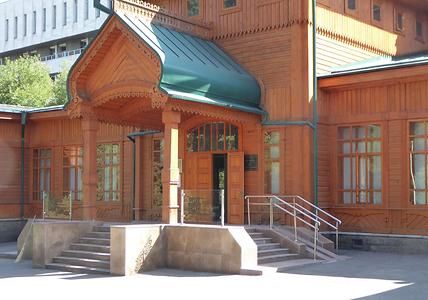
An old wooden building houses the museum of ol dmusical instruments. Photo: H. Maurer, August 2017
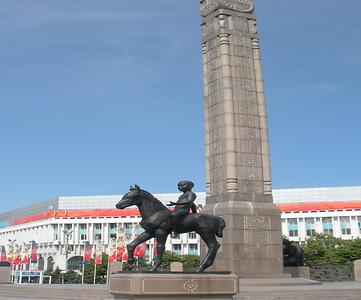
Part of the "Place of the Repulic" with a tall column and two young boys on horses. Photo: H. Maurer, August 2017
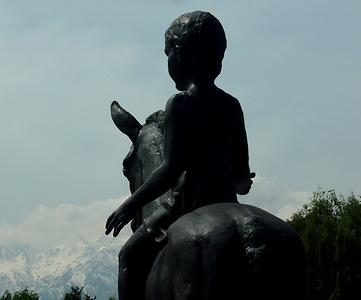
Boy on horse. Photo: H. Maurer, August 2017
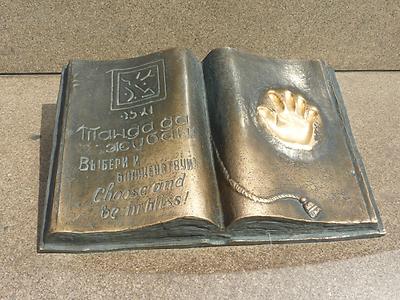
The constittuion of Kasachstan with the impression of the presidents hand. Photo: H. Maurer, August 2017
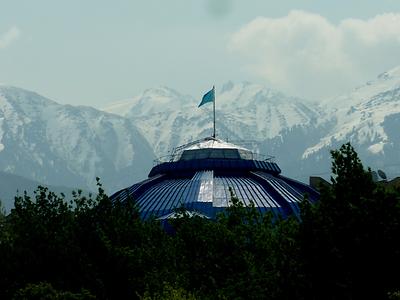
High mountains visible from Almaty. Photo: H. Maurer, August 2017
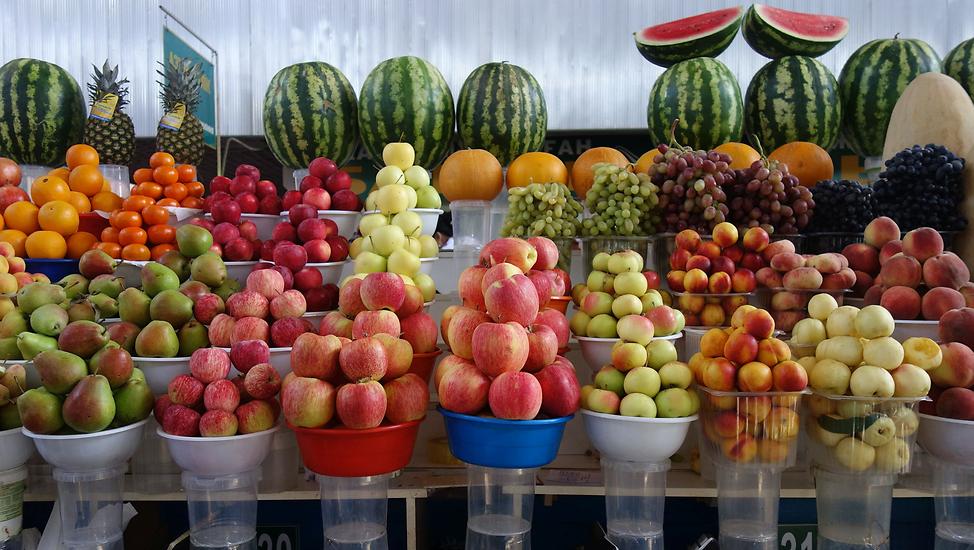
Almaty is the original home of apple trees. Photo: H. Maurer, August 2017
Tasting a large apple I could not refrain from complimenting the salesman: "Your apples are really unusually good"! ""Yes", was his reply, "we only import the very best from China."
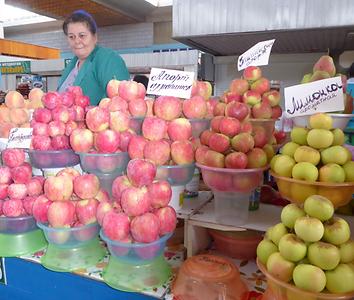
In the Bazar. Photo: H. Maurer, August 2017
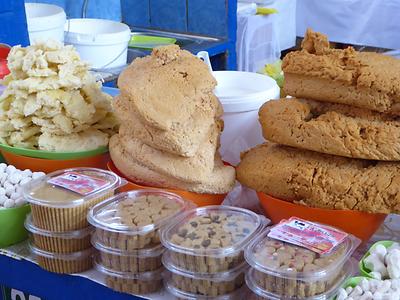
In the Bazar. Photo: H. Maurer, August 2017
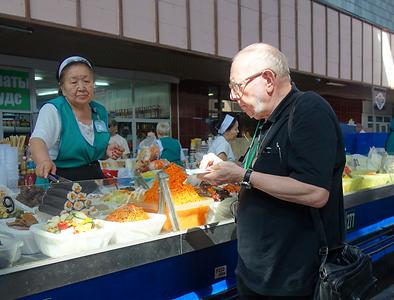
Tasting Chim-chi. Photo: H. Maurer, August 2017
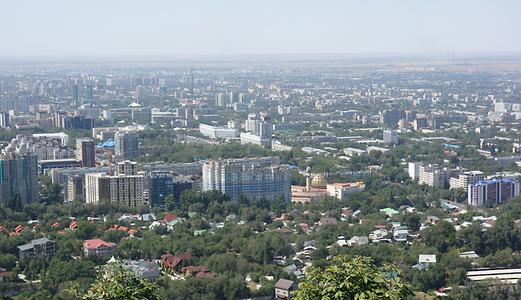
View from the "green hill" with the TV tower, reachable by gondola. Photo: H. Maurer, August 2017
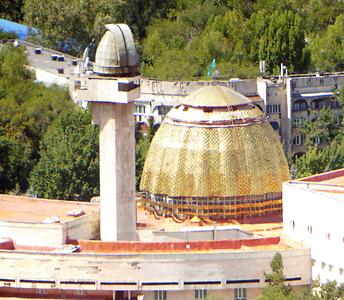
View of a kindergarten (!) with a small observatory, taken by zoom form the hill. Photo: H. Maurer, August 2017
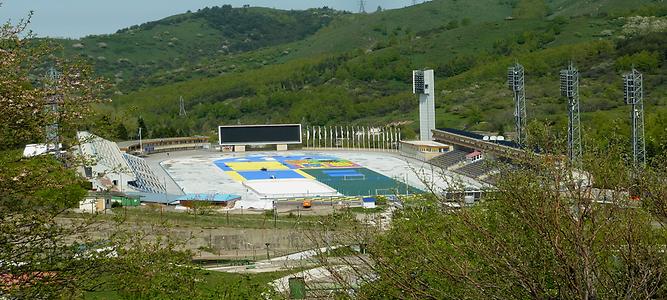
The famous ice stadion of Medeo a few kilometers uphill from Almaty. Foto: H. Maurer, August 2017
Sharyn National Park and Canyon#
The national park
Sharyn National Park, Kasachstan
is some 205 km East of Almaty. It is particularly famous for its red sandstone canyon somewhat reminiscent of Canyon Lands in Utah. Going down a side canyon for about an hour one reaches a simple lodge and the river Sharyn that has carved out the main canyon.
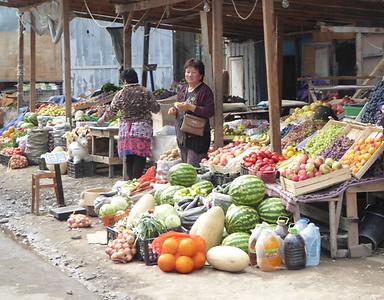
Stopping along the road. Photo: H. Maurer, August 2017
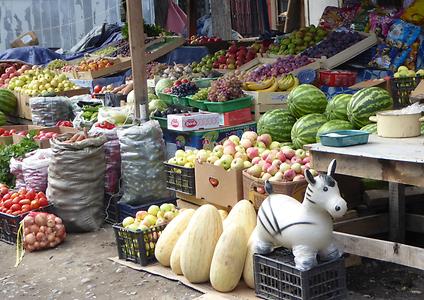
Stopping along the road. Photo: H. Maurer, August 2017
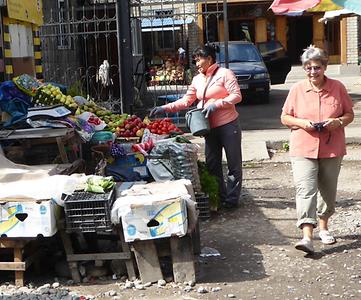
Stopping along the road. Photo: H. Maurer, August 2017
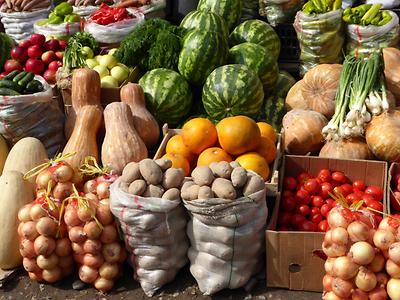
Stopping along the road. Photo: H. Maurer, August 2017
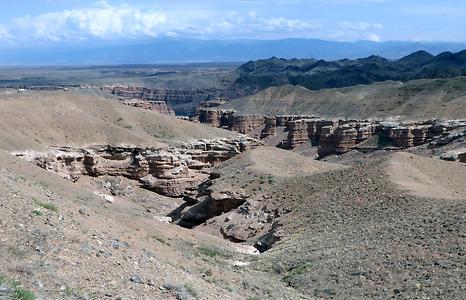
We have reached the plateau into which water has carved canyons. The main canyon with the river is at the very back, to the right is the canyon we will hike down. Photo: H. Maurer, August 2017
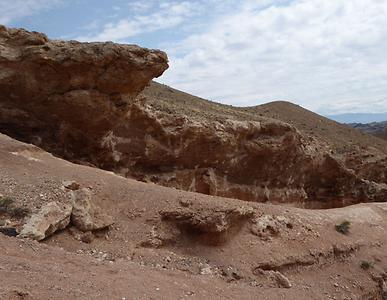
Hiking down the canyon. Photo: H. Maurer, August 2017
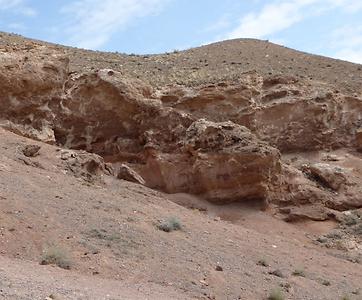
Hiking down the canyon. Photo: H. Maurer, August 2017
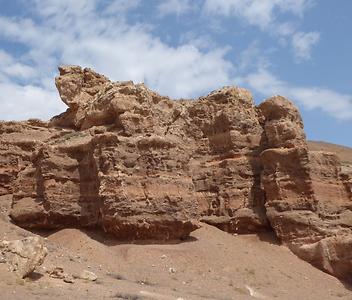
Hiking down the canyon. Photo: H. Maurer, August 2017
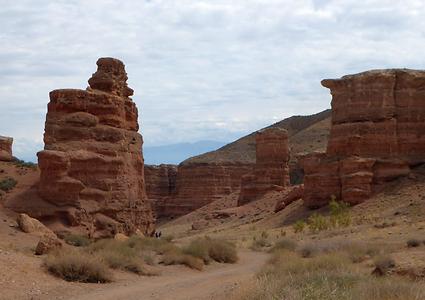
Hiking down the canyon. Photo: H. Maurer, August 2017
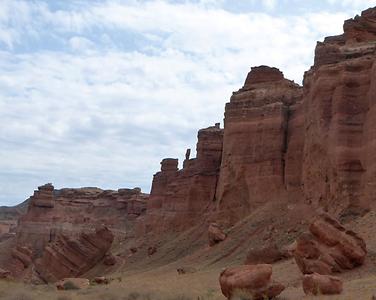
Hiking down the canyon. Photo: H. Maurer, August 2017

Hiking down the canyon. Photo: H. Maurer, August 2017
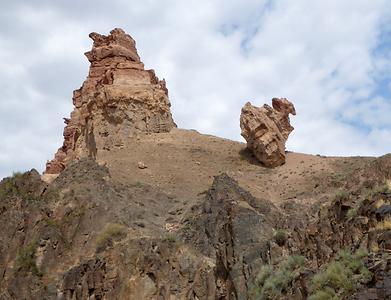
Hiking down the canyon. Photo: H. Maurer, August 2017
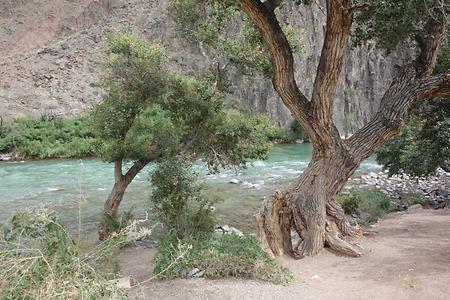
We have reached the main canyon, 85 km long, with the (name giving) Sharyn river. Photo: H. Maurer, August 2017
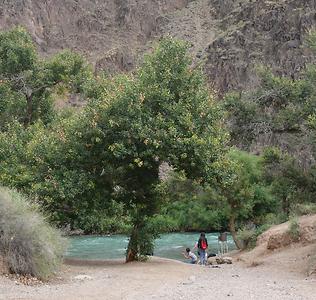
Sharyn river near a small lodge (see below). Photo: H. Maurer, August 2017
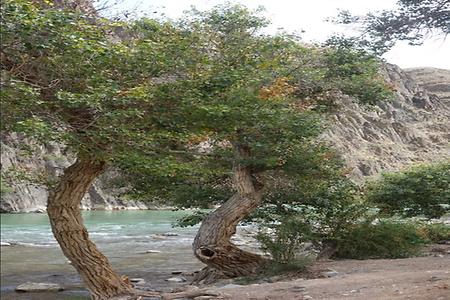
Sharyn river. Photo: H. Maurer, August 2017
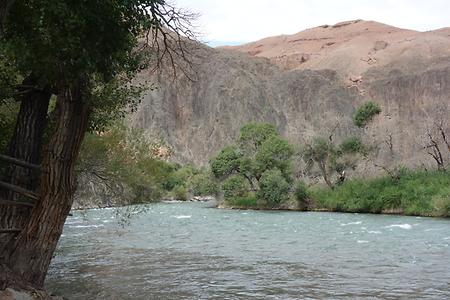
Sharyn river. Photo: H. Maurer, August 2017
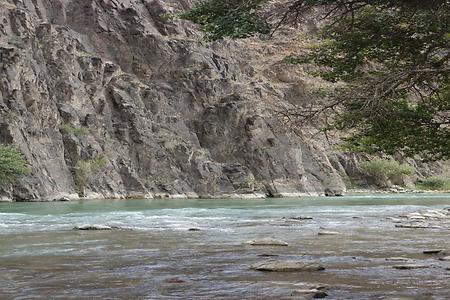
Sharyn river. Photo: H. Maurer, August 2017
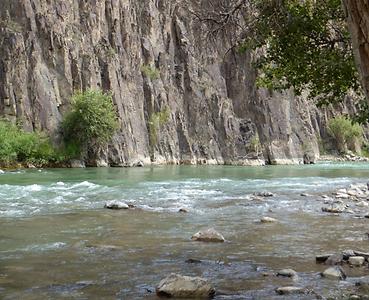
Sharyn river. Photo: H. Maurer, August 2017
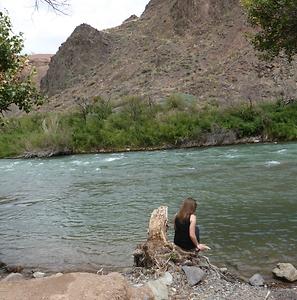
Sharyn river. Photo: H. Maurer, August 2017

Sharyn river. Photo: H. Maurer, August 2017
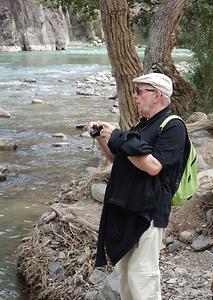
Sharyn river. Photo: H. Maurer, August 2017
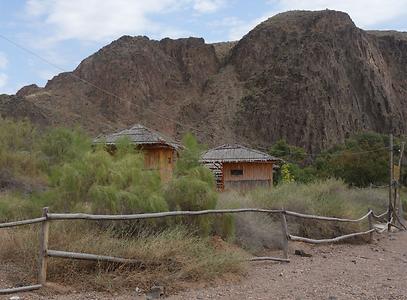
The lodge. Photo: H. Maurer, August 2017
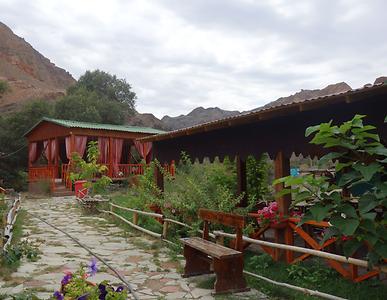
The lodge. Photo: H. Maurer, August 2017
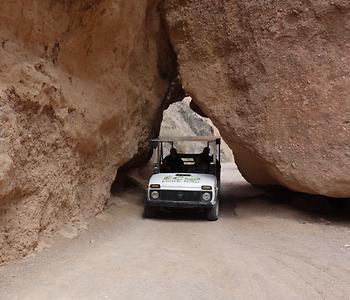
Lazy tourists can take a 4-wheel taxi to avoid going up-hill. Photo: H. Maurer, August 2017
Golden man museum and lake Issyk#
The Golden Warrior is a statue of a Scythian warrior recovered from a kurgan, or burial mound, some 70 kilometers from Almaty in Issyk in 1969. In this burial mound, a skeleton was found and its believed to have been an 18 year old Scythian warrior prince dating back to the 3rd or 2nd century B.C.
The Scythians were a nomadic tribal people that inhabited the Pontic-Caspian steppe and described in Herodotus’ "The Histories". The Scythian people disappeared from history with the rise of the Kipchak Turks in the territory of Northern Mongolia.
After the museum visit we drive to the Issyk lake
Issysk lake, Kasachstan
at around 1800 m altiduted. NOTE: Click at the flag, and then on the camera in the lake to get very good pictures of lake and area.
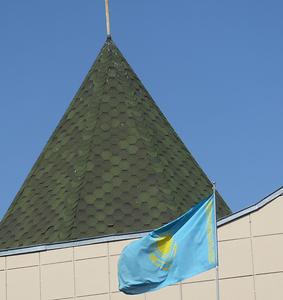
Top of museum with flag. Photo: H. Maurer, August 2017
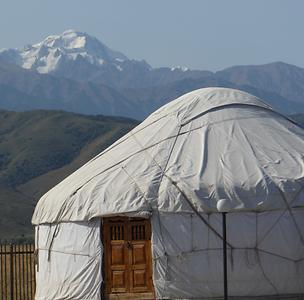
Nomadic tent (Yurte) near museum with high mountains in the background. Photo: H. Maurer, August 2017
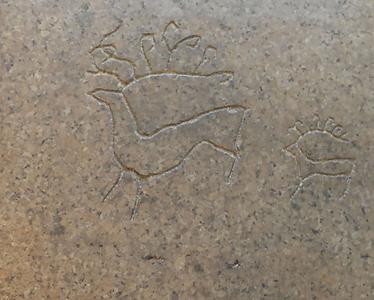
Stone engravings in museum. Photo: H. Maurer, August 2017
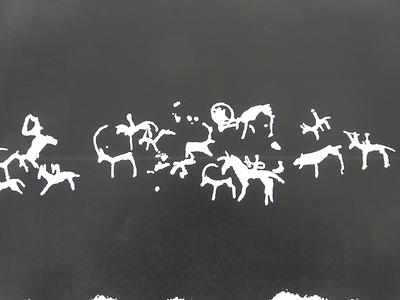
Copies of stone engravings in museum. Photo: H. Maurer, August 2017
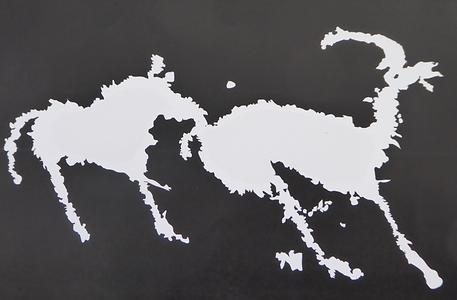
Copies of stone engravings in museum. Photo: H. Maurer, August 2017
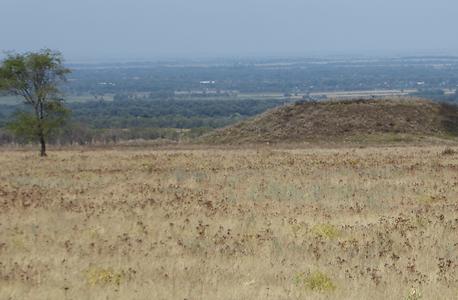
Burial mound like the one in which the golden warrior was found, as seen from the museum. Photo: H. Maurer, August 2017
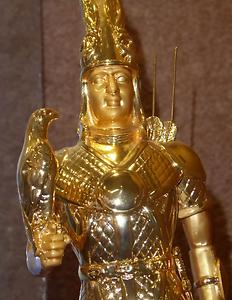
Idealized picture of golden warrior. Photo: H. Maurer, August 2017
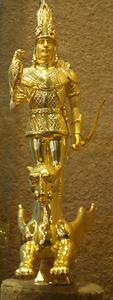
Idealized picture of golden warrior. Photo: H. Maurer, August 2017
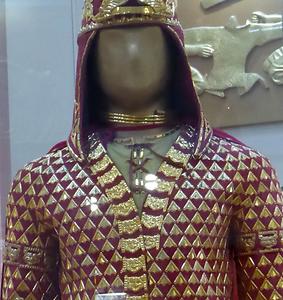
Life sized version of golden warior. Photo: H. Maurer, August 2017
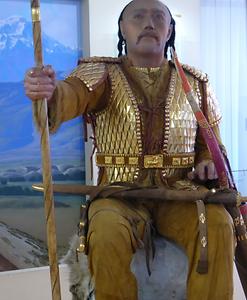
Another warrior unearthed nearby. Photo: H. Maurer, August 2017

Ornament on golden warrior. Photo: H. Maurer, August 2017
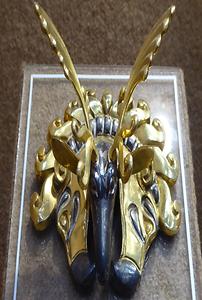
Other finds or replicas. Photo: H. Maurer, August 2017
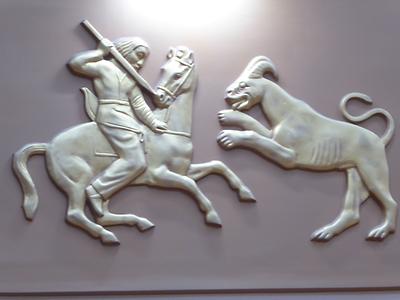
Other finds or replicas. Photo: H. Maurer, August 2017
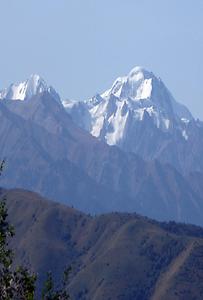
Mountains in the backdrop. Photo: H. Maurer, August 2017
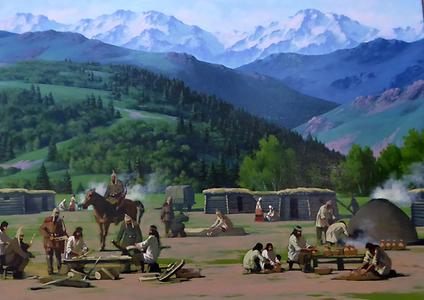
Picture of how life may have looked like thousands of years ago. Photo: H. Maurer, August 2017
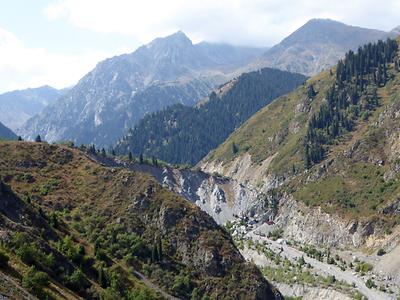
Drive to lake Issyk. Photo: H. Maurer, August 2017
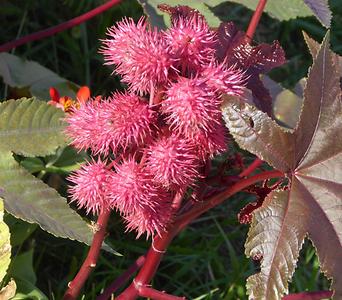
Thorny flowers en route. Photo: H. Maurer, August 2017
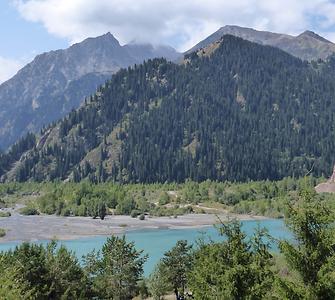
Issyk lake. Photo: H. Maurer, August 2017
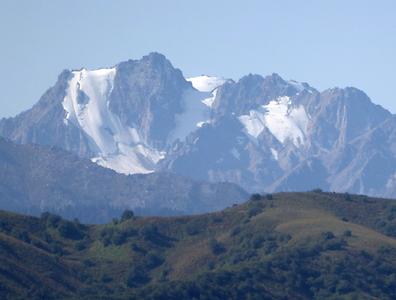
Mountains behind the lake, but photo required extreme zoom. Photo: H. Maurer, August 2017
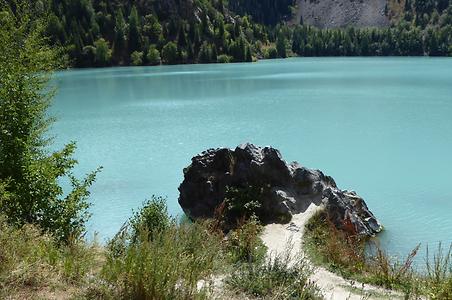
Rock, in lake. Photo: H. Maurer, August 2017
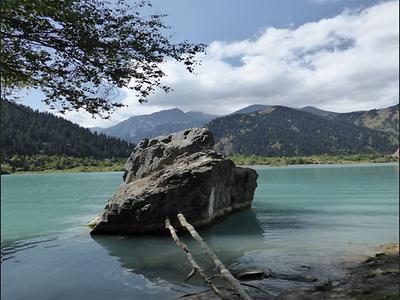
Pictureque lake. Photo: H. Maurer, August 2017
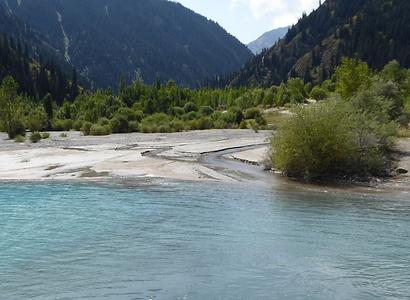
The water has the typical colour of melted glacier ice. Photo: H. Maurer, August 2017
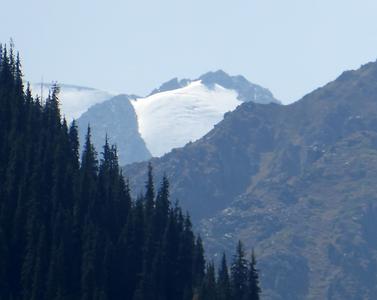
Hihg mountains. However, the glaciers are at quite a distance, even if extreme zooming makes them nicely visible. Photo: H. Maurer, August 2017





















































































































































